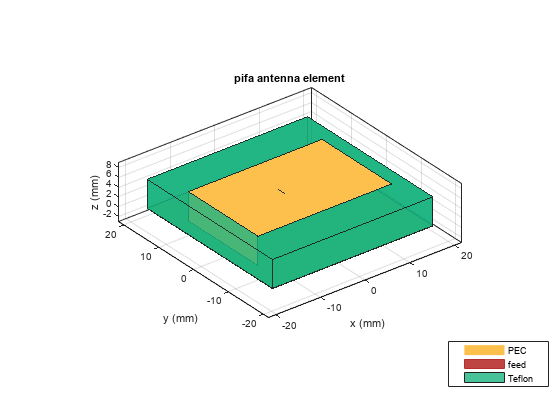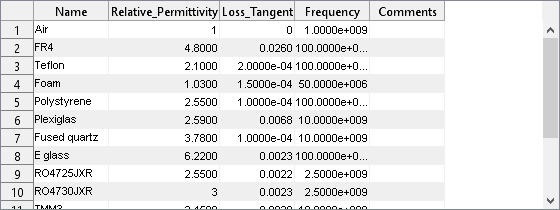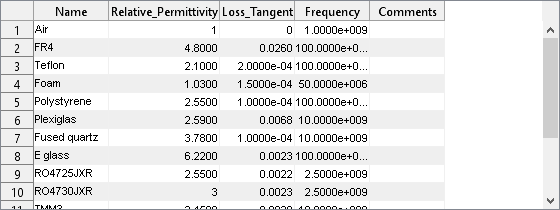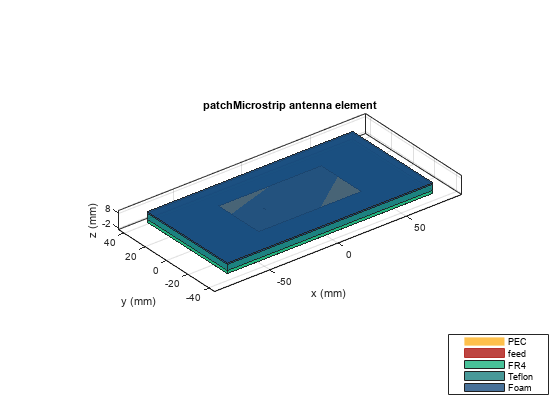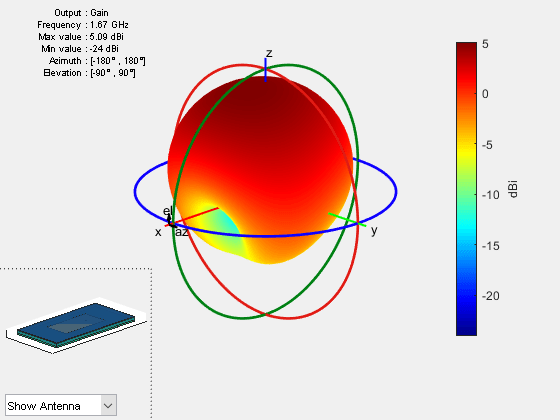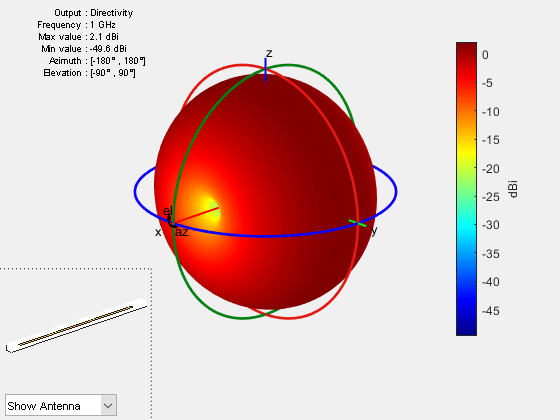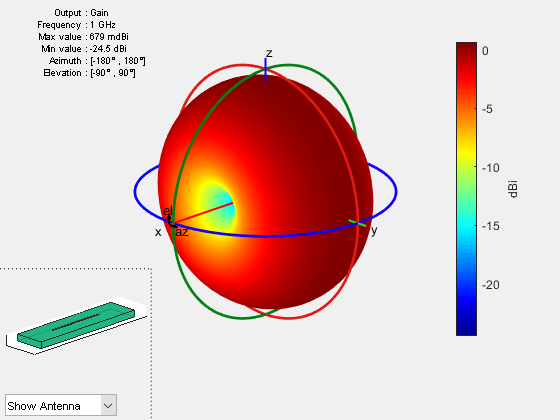dielectric
Dielectric material to use as antenna substrate
Description
Dielectric material used as a substrate for antennas.
Creation
Description
d = dielectric(material)
d = dielectric(PropertyName=Value)PropertyName is the
property name and Value is the corresponding value. You can specify
several name-value arguments in any order as
PropertyName1=Value1,...,PropertyNameN=ValueN. Properties that you do
not specify, retain their default values.
For example, d =
dielectric(Name="CustomDielectric",EpsilonR=4.5,LossTangent=0.02,Thickness=1e-3)
creates a custom dielectric material of 1mm. thickness with relative permittivity of 4.5,
and loss tangent of 0.02.
Input Arguments
Properties
Object Functions
getMaterialProperties | Calculate dielectric properties of material |
